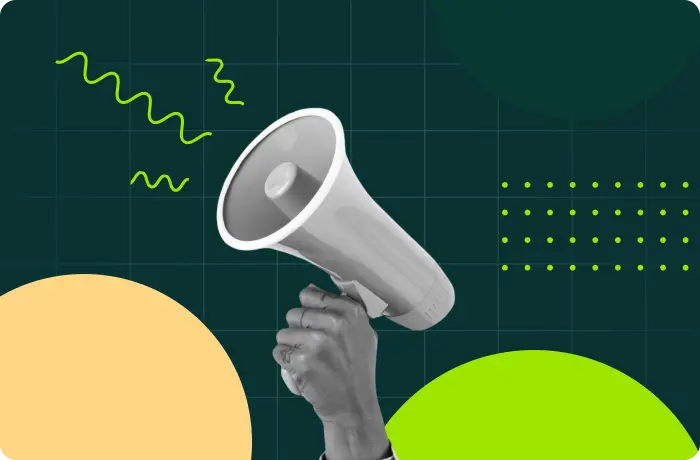Stay ahead of the curve with our guide to the latest graphic design trends.
Imagine walking into a store without any labels or packaging. How would you know what products are available? This is where graphic design comes into play. Graphic design is the art of creating visuals that communicate a message effectively. It is a way to make a lasting impression and set a business apart from its competitors. Graphic design has become increasingly important in today’s fast-paced world, where consumers are bombarded with messages from multiple sources. In this article, we will delve into graphic design, its history, the tools and techniques used in the industry, and its role in our lives.
What is Graphic Design?
Graphic design involves creating visuals that communicate a message. This can include logos, business cards, brochures, websites, and social media graphics. It is the process of combining art and technology to create visually appealing and effective communication. Graphic designers use various tools and techniques to create their designs, including color, typography, images, and layout.
History of Graphic Design
Graphic design has a rich history that dates back to ancient civilizations. From the hieroglyphs of the Egyptians to the illuminated manuscripts of the Middle Ages, design has played an essential role in communication. However, it was only with the advent of the printing press in the 15th century that graphic design began to take shape as we know it today.
The history of graphic design can be traced back to the invention of the printing press in the 15th century. With the ability to mass-produce printed materials, the need for graphic design arose. The first graphic designers were craftsmen who used their skills to create intricate and decorative illustrations for books and other printed materials. In the 19th century, with the rise of industrialization and the spread of mass media, graphic design began to evolve, incorporating new techniques and technologies such as lithography and photography.
The 20th century saw graphic design become a more prominent and specialized field with the development of printing technology and the rise of modernism. Artists such as Paul Rand, Saul Bass, and Milton Glaser became known for their contributions to the field, creating iconic logos and designs that have stood the test of time.
The Forms and Functions of Graphic Design
Graphic design takes many forms and serves various functions. From designing a logo for a company to creating a billboard for a new product, graphic design plays a significant role in shaping how we see and interact with the world around us.
One of the essential forms of graphic design is user experience (UX) design. UX design refers to creating a user-friendly and visually appealing experience for a product or service. It involves understanding the user’s needs, behaviors, and emotions to create a functional and enjoyable design.
Another critical aspect of graphic design is web design. Web design involves creating and maintaining a website’s look and feel, including its layout, color scheme, and typography. A well-designed website not only looks good but also helps to engage and retain visitors.
The Creative Process Behind Graphic Design
Creating a compelling design is a collaborative process that involves various stakeholders, including designers, clients, and users.
Ideation and Brainstorm
The process typically begins with ideation, where designers brainstorm ideas and concepts for the design.
Research and Analysis
This is followed by a phase of research and analysis, where designers gather information about the target audience, competition, and market trends.
Design and Development
Once the research is complete, the designers move on to the design phase, where they create sketches, prototypes, and mockups of the design. This is where the designer’s technical skills come into play as they choose the appropriate colors, fonts, and layouts to bring their ideas to life.
Feedback and Testing
Finally, the design is tested with users to gather feedback and make any necessary revisions. This iterative process ensures the design meets the user’s needs and achieves the desired goals.
Elements of Graphic Design
The primary elements of graphic design are typography, color, and images.
- Typography is the art of arranging type, including selecting fonts, spacing, and hierarchy
- Color is used to evoke emotions and set the tone of a design
- Images, including illustrations and photographs, are used to communicate ideas and tell a story
Skills Required for Graphic Design
Graphic design is a multifaceted field that requires a wide range of skills. Some of the essential skills for graphic designers include:
- Creativity: The ability to think outside the box and develop original ideas
- Communication: The ability to communicate a message effectively through visuals
- Attention to detail: The ability to pay close attention to small details and ensure consistent designs
- Typography: The ability to use typography effectively to communicate a message
- Software: The ability to use graphic design software such as Adobe Photoshop, Illustrator, and InDesign
Tools and Techniques Used in Graphic Design
Graphic designers use a variety of tools and techniques to create their designs. These tools range from traditional methods such as pencil and paper to modern computer software. For instance, Adobe Creative Cloud is a popular software suite that includes Photoshop, Illustrator, and InDesign. These tools are ideal for creating print, web, and mobile platform designs.
Another software that is gaining popularity is Figma, a cloud-based design tool that enables collaboration and prototyping. Figma allows designers to create interactive designs and share them with clients and team members in real-time.
Techniques such as sketching, prototyping, and user testing refine designs and ensure that they effectively communicate the intended message.
Importance of Graphic Design in Business
In today’s competitive market, businesses need to stand out from their competitors. Graphic design is vital in establishing a brand identity and lasting impression. A well-designed logo and branding can increase brand recognition and loyalty, making it easier for customers to remember a business. Additionally, effective design can communicate a message quickly and clearly, making it easier for businesses to connect with their target audience.
Furthermore, graphic design is not limited to just visuals. It can also influence user experience (UX) design. UX design enhances user satisfaction by improving usability, accessibility, and interaction between the user and the product. A good UX design can lead to increased customer loyalty and retention.
Designing agencies are crucial for businesses as they help establish a strong brand identity, create memorable visual content, and effectively communicate messages to target audiences. At Reestify, we offer top-notch graphic designing services to help businesses establish a strong visual identity and stand out in the marketplace. Our expert designers create unique logos and branding that effectively communicate your message, increase brand recognition, and drive customer loyalty. Effective design is crucial in connecting with your target audience and ensuring your message is received clearly and quickly. Choose Reestify for all your design needs and watch your business stand out from the competition.
Future of Graphic Design
The future of graphic design is exciting, with new technologies and techniques constantly emerging. With the rise of augmented reality (AR) and virtual reality (VR), designers now have even more opportunities to create immersive user experiences. In addition, the demand for sustainable design practices is increasing, with more businesses looking to incorporate eco-friendly design solutions. As technology continues to evolve, the possibilities for graphic design are endless.
Bottomline
Graphic design is a powerful tool that can be used to convey ideas, evoke emotions, and establish brand identities. It is a field that requires creativity, attention to detail, and a deep understanding of design principles. With the availability of design software and the industry’s growth, there has never been a better time to pursue a career in graphic design.
FAQs
What Makes Graphic Design so Important?
Graphic design is essential because it communicates visual information through various mediums, such as websites, logos, packaging, and advertisements. It helps to create brand recognition, attract customers, and convey a message effectively.
How can I Learn Graphic Design?
To learn graphic design, one can enroll in online courses, attend workshops, or pursue a degree in graphic design. Practice and experimentation with different design tools and software are crucial for improving skills.
Is Graphic Design a Good Career Choice?
Graphic design can be a fulfilling career choice for those who are creative, detail-oriented, and possess excellent communication skills. With the increasing demand for digital content, graphic designers are in high demand across industries. However, the competition is also high, and one needs to keep up with the latest design trends and technologies to succeed in this field.






